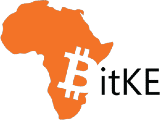
A recent survey conducted by CGAP reveals that M-PESA wallet balances, on average, remain low, which suggests M-PESA is primarily a transaction tool and less of a savings tool.
The survey has revealed that an average M-PESA net balance is less than KES 1,000 ($10) and this figure remains constant whether the user has a bank account or not. These balances were the same across employment types and income levels.
According to CGAP:
“This suggests that while banked M-PESA users might be saving money in the bank and using their mobile money accounts for transactions, those without bank accounts are finding ways to save outside of their wallet accounts (to the extent they are saving).”
As a result of the above, since mobile money accounts eclipsed the total number of bank accounts in 2009, the banks have turned this around. Bank accounts in Kenya today outnumber mobile money accounts by more than 30 percent. Banks in Kenya have discovered new ways to compete and collaborate as they adapt to an increasingly digital and mobile financial services market.
A look at the average digital credit also revealed that digital credit does not stay digital for loan with 46 percent of respondents withdrawing the credit out of their wallets within the first day.
Below are the stats:
- 46% withdraw within the first day
- 25% transfer to another user account
- The average net balance (difference between inflows and outflows) ranges between +/- Ksh 250 ($2.50)
- Average loan size is KES 2,420 ($24)
- 73% borrow from only one credit provider
- Average user has 4.5 loans
- Only 5% use the same agent for deposits
- Only 3% use the same agent for withdrawals
The survey also showed that mobile money agents are more like petrol stations and not barber shops, a place to stop quickly and transact (petrol station) rather than a place for repeat customers (barber shop). Most users are not loyal to individual agents. Only 5 percent of users always went to the same agent to make a deposit, and just 3 percent always went to the same agent to make a withdrawal.
Transaction data showed that Kenyan customers are more loyal to retail stores like grocers than they are to agents. In a sense, this is not surprising since deposit and withdrawal services are largely commoditized.
The above survey demonstrates that while mobile money has been successful in offering financial inclusion to 83% of Kenyans, it does not necessarily spell death to traditional banking. The survey even shows that it has helped in enabling the traditional banking industry to remain relevant and even outspace mobile banking services like M-Shwari.
About CGAP
CGAP is a global partnership of more than 30 leading development organizations that works to advance the lives of poor people through financial inclusion.
CGAP uses action-oriented research, testing, learning and knowledge sharing intended to help build inclusive and responsible financial systems that move people out of poverty, protect their economic gains and advance broader development goals. It researches and experiments to achieve proof of concept and extract lessons that can be built to scale by partners, who apply CGAP insights in the marketplace.










